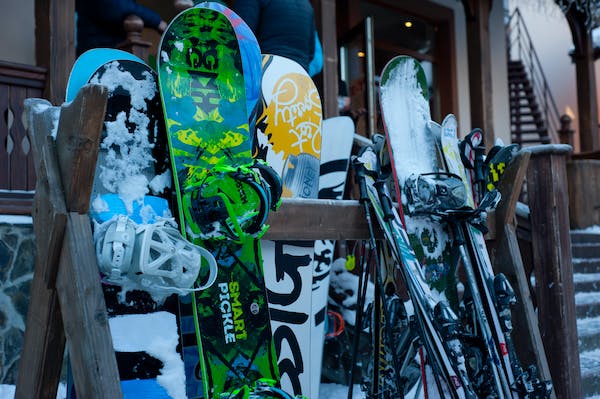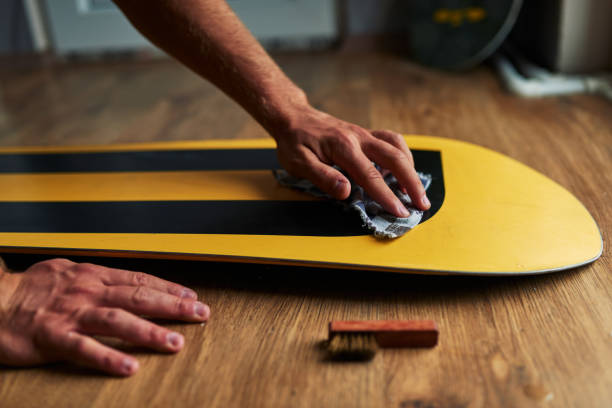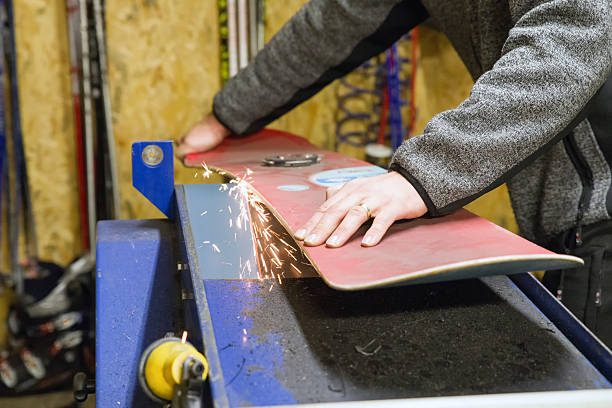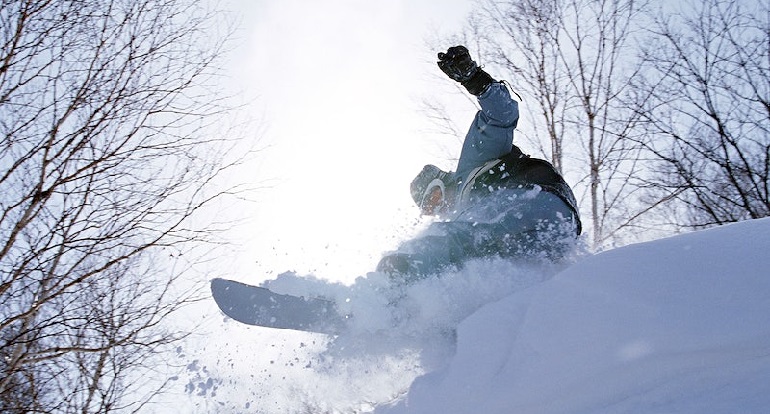It is important to know the lifespan of your deck. Why? Because you don’t want to waste time and energy on a worn-out piece. I mean, advancement from basics to intermediate tricks demands a stern board and not the one that squeaks and screams ‘Leave me alone!’
Products, just like people, have lifecycles too. A snowboard that has hit maturity and is busy making its way to the decline phase, is a big ‘No.’ As its declining life will only deal a mighty blow to your progress. So, before it puts you down in front of your pals, put a new label on your relationship with it.
But how do you know it is time for a new one? How long do snowboards last? All your questions will be answered in this article.
Generally, a snowboard may last between 74 and 100 days of riding if you take care of it properly!
Just so you know, there is a difference between what a manufacturer says about the life of a snowboard and how long it last. Do you wonder why? Because it is a two-way street. The maker and the user, both are required to add their 50 pc.
After it is manufactured, it all depends on you, so it gets subjective. And how you keep and use it will determine its life of it. So, let’s dig a bit deeper to find how long a snowboard lasts typically, and what factors play in its favor to prolong its life.
How to Know When to Replace a Snowboard?
Although it might appear to be an ambiguous question, some rules do tell us about the intactness and workability of a snowboard. Its condition will tell you how many seasons it will last.
Let me state one thing loud and clear it all depends on you. How many times it has been ridden, the way you ride it, and how much you care for it will determine its longevity.

I mean, if you are a snow rat, be prepared to replace it every now and then. However, for an occasional rider, even a cheaper snowboard can last longer. Similarly, an aggressive rider will most certainly feel their board acting all tired sooner than a lighter rider.
As mentioned earlier, there are some rules, the application of which decides the time for a replacement. Let’s explore them one by one:
I am sure you are quite familiar with the word ‘pop’, aren’t you? It is a term that refers to the rebound a snowboard generates.
This pop gives you that extra speed and your ollies that mighty extra height. Check if the snowboard feels dead, if it does, that’s the green signal to a new purchase.
Another way is to inspect the rocker/camber of the snowboard. See if it is wearing out or intact. A camber is a curve that helps the board in gliding. A rocker can be positive or negative. It is responsible for more pop, better control, and quality turn initiations.
If you lay your board on the ground face up, you will notice a curve running through its profile from nose to tail. An intact board will have the base lifted between the contact points. This gap should stay as is and not close up.
Making Your Snowboard Last Longer
How do you do it? A short answer would be that you wax it regularly, store it properly, and ride it with care. Even if you skip one step from the said, your board might degrade faster than you might have expected.
Maintenance is always better than repair. You might be yelling right now that it is not an issue at all for you because the repair process comes cheaper than buying a new item.

My annoying friend, I would say that a technical product like a snowboard is worth repairing than replacing it. So, have a look at the sections below to start taking better care of your snowboard.
To make your snowboard last longer you should have to use the snowboard wax and tuning kit properly while snowboarding on a mountain.
Keep Your Snowboard in a Dry Place.
Trust me, as long as your deck is stored dry and properly waxed, it can last over 9 to 10 years in storage without degrading. Usually, riders store a board for six months, which is a normal gap between the ideal season each year.
Storing a board wet and unwaxed for a longer period like six months would cost you a fortune.
Below I have summarized some key points to elaborate on how to store a snowboard. You need to:
- Dry out your snowboard after you are done using it. This helps in fighting rust that might build up at metal edges.
- Always store your deck in a dry place at room temperature. It should be stored out of direct sunlight.
- Wax it after every season. It keeps the board from drying out while not in use as well as lets you enjoy faster and smoother rides.
- An upright standing position for storage is ideal only for short storage periods as it can tweak the camber and flex of the board if you store it in this position for too long. So, it is better to keep your board stored flat for a longer time period.
- Before the next season, always scrape off the previous wax and add a fresh coat.
Repairing the Base
The base is the most vulnerable part of the snowboard as it is in direct contact with the surface underneath. Never forget that snowy terrains are adorned with rocks too. So, always look out for scratches, dents, and dings.
A core shot does the most damage, as it allows moisture and dust to reach the base of the snowboard, which is detrimental to its life.
Not to mention, the type of riding also plays a major part in determining the life of a board. If you are an aggressive rider, you need to take care of your piece more efficiently.

Avoid snapping the board ever so often while performing tricks, hitting rocks, and cracking the edges of the board while sliding to avoid serious base damage. All of this can lead to severe issues like holes in the base, which will result in the delamination of the entire top sheet.
Let me tell you one more thing, the base grind is no child’s play. Grinding too often will only make the board run out of material from its base.
If you want to repair it yourself, better stock P-Tex, Loctite, wax, and a range of scrapers and files. These materials prove helpful for overnight repair.
Tuning the Edges
Tuning includes grinding the base and sharpening the edges, which should be done every few years. However, if you ride a lot, regularly tune the edges to keep them sharp longer.
Edges that become too dull take a lot of effort to get sharp again. And a poor human like me cannot file it in one sitting. Another option would be to pay up to $75 for a full tune. Well, that’s an easy ‘NO’ for me.
So, before you hit the rails and slopes, look out for issues like worn-down metal edges; rocker drag-out at one side; stiffer flexing when not in use, etc. All these faults indicate a dull ride. That’s when you know you need to replace your current snowboard.

Factors That Affect How Long a Snowboard Last
There is no exact way to predict the exact life of a snowboard, but we can try to enhance the life of your gear by keeping it in a good condition.
Usually, a snowboard will last for 75 to 100 days of riding. After that riding count, the board will still be able to ride, but it might start to feel lifeless. And nobody wants to ride an unresponsive deck.
Let’s see what are the factors that affect the life of a snowboard.
Snowboarding Style
You see, the number of days riding that most companies offer their snowboards is about 100 days. However, this doesn’t take into consideration the riding styles.
Casual Snowboarder
A casual rider will hit gentle slopes and groomers, and avoid big heavy rocks and drops, courtesy of which the board will last an entire season or more.
Especially if you stay within the weight limit of the deck, it is probably going to last thrice the time than any park board. Such a rider can expect to replace the board after 200 or more days.
Park Rider
Park rats love to go for big drops and all kinds of tricks, which is why their boards usually snap within a season.
Free riding is all about pushing your board’s limits. Doing so weakens the structure of the board, rendering it lifeless until the end of the season. A park rider can expect to replace their board within 100 days.

Advanced Rider
A heavy jibber who spends a lot of time giving a hard time to their deck. Such a rider hits jumps all days of riding until the board snaps, hence, can expect to change the snowboard after 50 to 100 days.
Quality of Snowboard
A brand new board, straight out of the production line, with no previous history of riding, can live up to the expectations of the manufacturer and your riding style. However, a secondhand piece leaves you guessing as to how many days your board will last.
Before you hand in your hard-earned money, give that board a thorough examination. Look out for deep cuts, holes, gauges, scratches, and any other major damage. If you spot a deep cut, you know it is a big no.
When Should I Replace My Snowboard?
You are expected to replace your old board if you find it snaps, has holes, breaks, or delaminates. You can minimize these issues by avoiding hitting rocks and hard surfaces as these are your board’s worst enemies.
Just to let you know, the ride quality of your board will deteriorate over time. You have to start noticing its performance at least after your 60th ride.
Also, snowboard design is constantly evolving. Newer boards advocate new technology which makes your equipment a magical tool for a great mountain experience.
Final Thoughts
As I mentioned earlier, you are partially responsible for the life of your deck. I know it doesn’t sound nice not to blame the manufacturer alone which we usually do, but trust me, it is a matter of reciprocity.
Give and Take! Keep your board in decent condition and it will give you more days of good riding.
0 Comments